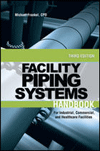Expansion strategies for industrial distribution
When to open a new location and when to acquire.

Image Source: Anuphan Poolkoet / Creatas Video via Getty Images
For some industrial distributors, there comes a point in which the business has a complete market share of its geography. It has reached the peak of its revenue-generating capabilities. To enter new markets and target more customers, the question of expanding into nearby regions arises. When expanding into a new geography, there are two main avenues of attack: opening a new location or acquiring an existing business. There are advantages and disadvantages to both strategies, and each method is more common depending on the lifecycle of the business looking to grow. This article will explore the advantages and disadvantages of acquiring existing businesses or opening a new location, and what industrial distributors looking to expand should consider during this important process.
It takes time for a new location to begin generating revenue. The more time spent on launching a new location, the more time a business spends with higher costs and no additional revenue. Acquisitions offer rapid market entry. The location that the buyer is acquiring is already physically established and carrying inventory. They have immediate access to an established customer base and local market knowledge. After the purchase is finalized, the new location should be able to immediately start generating revenue for the buyer. Building a new location from scratch takes more time due to factors like site selection, construction, hiring, and establishing market presence. This means that the location will not be generating revenue for 8 months to a year for larger businesses, and multiple years for smaller businesses.
Though acquisitions can provide an immediate new stream of revenue for the business, they often involve higher upfront costs, including purchase price and integration expenses. Indeed, there’s no such thing as a free lunch in M&A, and sellers know that there is intrinsic value to their established customer base, brand name, team of employees, and established cash flow. The seller’s valuation reflects these advantages and is much greater than simply the price of their property, infrastructure, and inventory. Opening a new location involves significant capital expenditure for construction and initial operations, but these costs can be phased and controlled more predictably over time.
New locations can be less expensive than acquisitions because owners aren't buying existing cash flow from an established customer base. As a result, opening a new location will most often be cheaper than acquiring another business, as the growing business won’t be paying for the convenience of its immediate returns. Instead, it will take more time to build the location, hire the right employees, and establish a market presence.
Opening a new location can offer more geographic optionality than an acquisition. Reports from 2022 to 2024 found that only 25-35% of industrial distributors would be open to selling their business. This means that in the majority of cases, an acquisition is not an option. By building a new location, the business has more freedom in choosing the geographic market that they think is most advantageous for them, not settling for only the locations that are available to be bought at that moment.
When a business makes an acquisition, they have the option of maintaining or changing the seller’s employees and management team. A larger business will require different management skills than a single-unit family business. The buyer must consider if the existing management team is ready to tackle the difficult process of integrating the business that they have helped grow into the operations and culture of a larger business. It is one thing to analyze a business’ cash flow history, but it is another one entirely to analyze the behaviors and leadership strengths of its management. It takes careful interaction with them and study of their past professional experiences, especially their experiences dealing with change. An acquisition can fall through if the acquired management team wants to do things “the way it’s always been,” and resists the process of integration into the larger business. The process becomes even more complex when thinking about leveraging the management team’s expertise. Because they are the ones with established customer relationships and knowledge of their geography, there will be times when the best decision is to defer to them and follow their judgment. However, there will be others when the buyer must push back against the desires of the management team for the sake of integrating into the larger business.
Reports from 2022 to 2024 found that only 25-35% of industrial distributors would be open to selling their business. This means that in the majority of cases, an acquisition is not an option.
When building a new location, businesses do not have the option of keeping or replacing management, as they have no management to begin with. The process of assembling a management team from scratch offers both challenges and opportunities. Unlike acquiring an existing company, you have the freedom to select and mold a team that aligns perfectly with your vision and goals. However, this also means that you must carefully evaluate each candidate’s abilities to not only manage day-to-day operations but also establish and nurture a company culture from the ground up. The skills required to lead a new venture differ significantly from those needed to manage and integrate an established business. It is crucial to identify individuals who can handle the dynamic and often unpredictable nature of this environment.
The right management team will be integral in creating customer relationships, understanding the local market, and establishing a brand presence. While there are advantages to building a new team, they will most likely have no established practices or existing customer relationships to lean on. This demands a proactive approach to market research and customer acquisition from the assembled team. Successfully opening a new location hinges on the leadership’s ability to drive the company towards its long-term objectives.
For both replacing an acquired management team and sourcing a new one, there are various streams to leverage for recruiting. For many distributors, referrals are key. Leveraging peers across buying groups or co-ops can help connect businesses with vetted candidates that they would not have met otherwise. Though less expansive, utilizing employee networks is also important. Employees understand the company culture and goals from the inside and can use that knowledge to find candidates that match what the company is looking for.
Though referrals can lead to high-quality candidates, not branching out can lead to too few candidates. To increase the quantity of candidates, a business can publicly display that they are hiring. This can mean posting on industry-specific recruiting websites, as well as LinkedIn, Handshake, and more. Physically going to industry events, trade shows, and conferences can give businesses an in-person impression of candidates and give candidates a better idea of the hiring business. By utilizing all of these different networks, a business can obtain the highest quality, most expansive list of candidates to build their team.
The decision of whether to make an acquisition or open a new location involves the balance of capital, time, and optionality. Making an acquisition can allow for immediate cash flows, but this will require a higher upfront cost than building a new location. The buyer will also only be able to acquire within the limited pool that is willing to sell. Opening a new location may take a few years, but this can spread the financial strain out over that period, with a lower upfront cost. It also takes significant time to vet and create a new management team. However, this gives the business the freedom to choose the location and team that it deems most fit for its expansion goals, instead of having to settle with the available locations or risk a misalignment with an acquired management team.
As a result, most smaller, single-unit locations opt to build new locations until they’ve established themselves across multiple locations and have the capital to acquire smaller businesses. Larger, multi-unit businesses often opt for a combination of the two. They have the capital for acquisitions, but at the same time want the freedom to expand into markets that have yet to be targeted by other distributors. So, the ability to make acquisitions often comes after smaller industrial distributors prove themselves in the market and thrive across multiple locations, allowing them to access two powerful growth strategies.
Looking for a reprint of this article?
From high-res PDFs to custom plaques, order your copy today!








